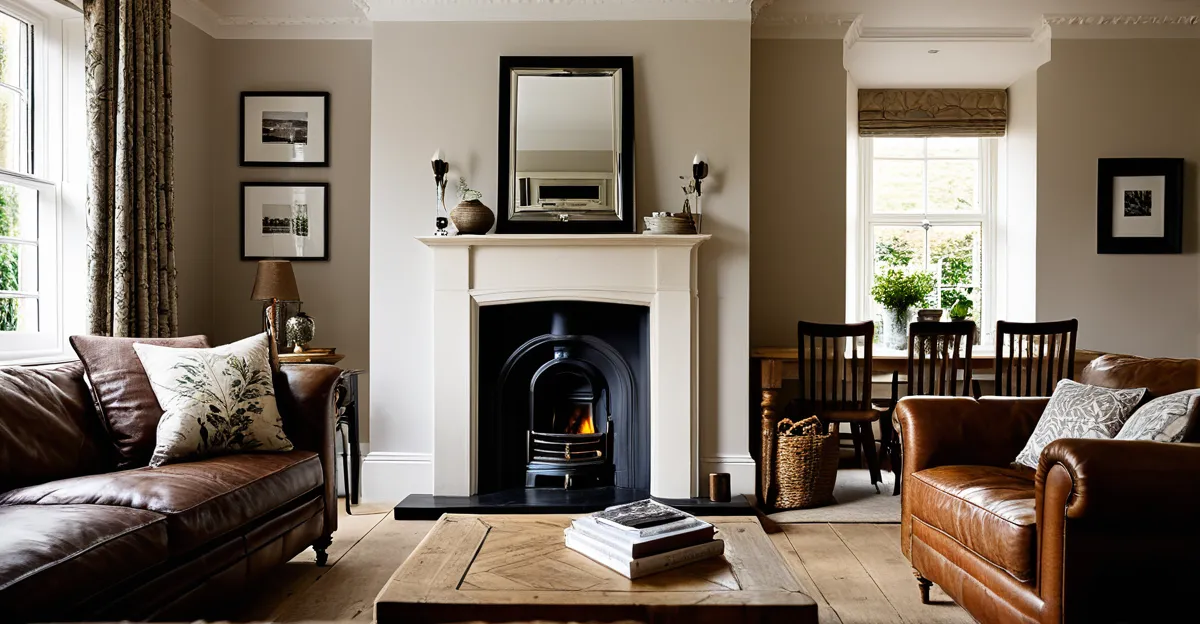Traditional UK Home Decor: Defining Elements and Key Features
Traditional UK home decor is distinguished by its rich history and distinct decor elements that evoke a sense of heritage and comfort. Classic British interior styles often incorporate substantial furniture made from solid woods such as oak or mahogany, crafted with ornate details that reflect craftsmanship. Upholstery typically features patterned fabrics like florals, tartans, or chintz, lending texture and depth to the space. These patterns reinforce the warm and inviting ambiance that traditional British interiors are celebrated for.
When discussing key characteristics of traditional UK home decor, it is essential to highlight the color palettes and motifs that define this aesthetic. Muted hues such as deep greens, burgundies, navy blues, and soft neutrals dominate, creating a cohesive and dignified environment. Floral and botanical patterns often adorn wallpaper or textiles, paying homage to nature and British heritage. These motifs enhance the feeling of timelessness and charm integral to this style.
Additional reading : How Can You Transform Your Living Room into a Tranquil Oasis?
Influential historical periods have shaped the evolution of traditional British interiors: Georgian, Victorian, and Edwardian eras each contributed distinctive features. The Georgian style emphasizes symmetry and proportion, with elegant moldings and classical furniture pieces. Victorian interiors introduce heavier ornamentation, rich colors, and layered textures, resulting in a more opulent look. Edwardian designs tend to be lighter, with a focus on comfort and subtle elegance while still honoring tradition. Understanding these eras helps clarify why traditional UK home decor maintains such enduring appeal in today’s interiors.
Benefits of Traditional UK Home Decor in Modern Living Spaces
Traditional UK home decor offers distinct home decor benefits that resonate in today’s fast-paced world. One of the most significant advantages is the enhanced sense of coziness and warmth it brings to living spaces. Classic British interior elements like rich textiles, layered patterns, and solid wooden furniture create inviting environments that encourage relaxation and comfort. This feeling is particularly valuable in modern homes, where a warm atmosphere often counters the sometimes sterile or minimalist tendencies of contemporary design.
Also to see : How Can You Enhance Your Living Space with Simple DIY Projects?
Another key benefit lies in the ability of traditional decor to cultivate a timeless atmosphere. Unlike fleeting trends, classic British interior styles retain their appeal through balanced use of color palettes and enduring patterns. Deep hues such as burgundy and navy, alongside floral or botanical motifs, establish a dignified backdrop that complements evolving tastes rather than clashing with them. This enduring quality translates into interiors that age gracefully, making investments in traditional decor both practical and aesthetically sound.
Furthermore, adopting traditional UK home decor can elevate the overall perceived value and aesthetic appeal of a home. The elegance embedded in classic styles lends a sense of refinement and history, enhancing how the space is experienced by residents and visitors alike. This refined aesthetic often contributes to a more sophisticated impression, highlighting the thoughtful choices behind furnishing and design. As such, traditional decor does more than beautify—it enriches the home’s identity.
Practical Ways to Incorporate Traditional UK Decor at Home
Adding traditional UK home decor to your living space begins with thoughtful choices that emphasize classic British interior charm without overwhelming the room. One effective decor tip is to update textiles—swap plain cushions or curtains for those featuring timeless patterns like florals, tartans, or chintz. These fabrics instantly infuse warmth and texture, reflecting the rich fabric tradition synonymous with British style.
Choosing and arranging furniture plays a critical role when incorporating tradition. Prioritize solid wood pieces crafted with classic lines and subtle ornamentation, such as oak sideboards or mahogany armchairs. Position these items to promote balanced symmetry, a hallmark of traditional interiors originating from Georgian design principles. This approach ensures each piece contributes both functionality and aesthetic harmony.
Mixing traditional and contemporary elements can create a balanced and inviting space. For instance, complement antique or reproduction furniture with modern lighting fixtures or streamlined décor accessories. This blend maintains the elegance and timeless appeal of classic British interiors while introducing freshness to your home. Careful contrast between vintage and modern pieces sustains the coziness and refined look so valued in traditional UK home decor.
Visual Inspiration: Examples and Comparisons
Discovering inspiration in traditional UK home decor often begins with observing real-life examples that embody classic British interior charm. Pictures and walkthroughs of authentic British homes reveal how key decor elements—such as tufted sofas, rich wood paneling, and floral wallpapers—combine to create inviting and historically grounded spaces. These designs emphasize balance, warmth, and detail, offering valuable insights for anyone interested in British style at home.
When comparing traditional UK home decor to modern styles, the differences are striking yet complementary. Traditional interiors focus on ornate woodwork, deep color schemes, and patterned fabrics, while modern decor favors sleek lines, minimalism, and neutral palettes. For example, a Victorian-inspired sitting room’s heavy drapes and carved furniture contrast with a contemporary living room’s open layout and minimal accessories. Understanding these distinctions helps in thoughtfully blending the two approaches for a harmonious space.
Key takeaways from expert-designed British interiors highlight the importance of layering textures, incorporating heritage motifs, and maintaining spatial symmetry. These techniques ensure that while the home feels rooted in tradition, it also remains functional and relatable. By studying such examples, homeowners can confidently incorporate traditional decor without sacrificing modern comfort or style.

